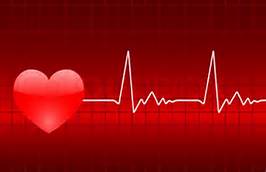A Japanese nationwide cohort study suggested that a diverse array of electrocardiogram (ECG) abnormalities was associated with an increased mortality and cardiovascular disease (CVD). The study included data of 3 698 429 working individuals (mean age, 47.1 years; 66.6% male) from April 1, 2015, to March 31, 2022, 16.8% had 1 minor ECG abnormality, 3.9% had 2 or more minor ECG abnormalities, and 1.5% had a major ECG abnormality. During a median follow-up of 5.5 years, baseline ECG abnormality was independently associated with an increased incidence of the composite end points of overall death and CVD admission compared with normal ECG (incidence rates per 10 000 person-years: 92.7, 128.5, 159.7, and 266.3 for normal, 1 minor, ≥2 minor, and a major ECG abnormalities, respectively; adjusted hazard ratios: 1.19, 1.37, and 1.96 for 1 minor, ≥2 minor, and a major ECG abnormalities, respectively). Furthermore, the presence and number of minor ECG abnormalities were associated with an increased incidence of developing new major ECG abnormalities (incidence rates per 10 000 person-years: 85.1, 217.2, and 306.4 for normal, 1 minor, and ≥2 minor ECG abnormalities, respectively; adjusted hazard ratios: 2.52 and 3.61 for 1 minor and ≥2 minor ECG abnormalities, respectively). The associations were noted across subgroups regardless of baseline CVD risk. The results suggest that routine ECG screening may help identify individuals at high CVD risk. However, there is neither a consensus regarding the classification of major and minor ECG abnormalities, nor the optimal follow-up examinations. Source: https://jamanetwork.com/
